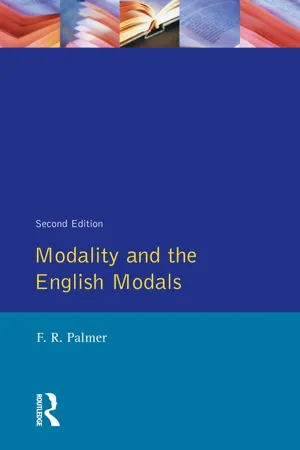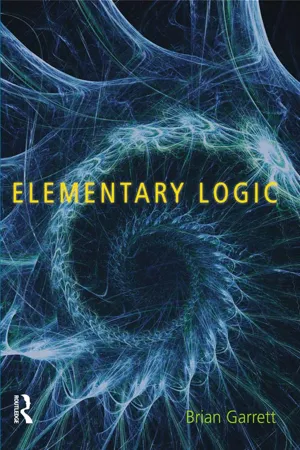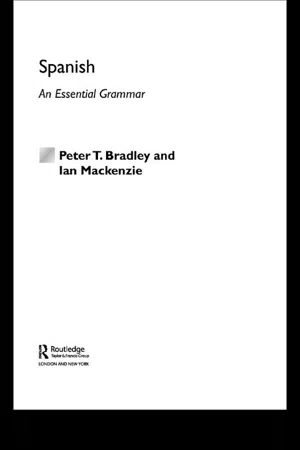Languages & Linguistics
First Conditional
The First Conditional is a grammatical structure used to talk about real or possible future situations. It consists of an if-clause in the present simple tense and a main clause with "will" or "can" plus the base form of the verb. This conditional is used to express likely or possible outcomes based on a specific condition being met.
Written by Perlego with AI-assistance
3 Key excerpts on "First Conditional"
Learn about this page
Index pages curate the most relevant extracts from our library of academic textbooks. They’ve been created using an in-house natural language model (NLM), each adding context and meaning to key research topics.
- eBook - ePub
- F.R. Palmer(Author)
- 2014(Publication Date)
- Routledge(Publisher)
Chapter 8 ConditionalsConditionals involve specific functions of the modals, and of WILL and SHALL in particular. They are, therefore, dealt with in this chapter, immediately following the discussion in Chapter 7 . The use of will and shall in conditional sentences was discussed in 7.2.2 , but some of the discussion needs to be repeated here. An equal, if not more important, part is played by the past tense forms would and should and by would have and should have.8.1 Types of conditional There are, it might seem, many types of conditional, but all follow from, or are closely related to, one simple pattern. 8.1.1 The basic patternAlthough the grammar of conditional sentences in English is basically very simple, it depends on a few quite specific rules. Most accounts of it rather disguise or confuse this basic pattern by bringing in distinctions that are secondary to it, and often predictable.A conditional sentence consists of two clauses, the if-clause and the main clause, or, in more technical language, the protasis and the apodosis. Its function is to indicate that the truth of the proposition in the protasis is dependent on the truth of the proposition in the apodosis. All conditional sentences are, therefore (unless there is ellipsis, with the apodosis omitted or ‘understood’), of the semantic form ‘if p then q’.There are no restrictions on the kind of proposition contained in either clause, and, in particular, there are no restrictions on the tense of either, though there are certain preferred combinations of tense, and the choice of tense may determine the interpretation. Thus both of the sentences that follow are possible and both indicate the dependence of the truth of one proposition upon the truth of the other, although the first may seem more likely: - eBook - ePub
- Brian Garrett(Author)
- 2014(Publication Date)
- Routledge(Publisher)
We must decide whether the ‘if … then …’ or the ‘provided that’ is the main connective. Let us take it that ‘if … then …’ is the main connective. In other words, let us interpret (11) as:(12) If Alex wins then (Cathy will be delighted provided that Henry comes last).Rephrasing the ‘provided that’ into ‘if … then …’ format, we get:(13) If Alex wins then (if Henry comes last, Cathy will be delighted).Our sentence has three simple sentences. We can label them using the capital letter technique:(14) If ALEX wins then (if HENRY comes last, CATHY will be delighted).We then replace the simple sentences with their capital letters:(15) If A then (if H then C).We now replace the occurrences of ‘if … then …’ with(16) A → (H → C)In (16), A is the antecedent and H → C is the consequent. Had we instead taken the ‘provided that’ to be the main connective, we would have ended up with:(17) H → (A → C)I leave this as an exercise for the reader. Note that, although different formulae, (16) and (17), unlike (10a) and (10b), are logically equivalent.ConditionalsA conditional sentence or formula has one (and only one) antecedent and one (and only one) consequent. Thus ‘if Adam eats more cake, he will put on weight’ is an indicative conditional sentence where ‘Adam eats more cake’ is the antecedent and ‘he will put on weight’ is the consequent. The assumption of elementary logic is that indicative conditionals are material conditionals and so correctly represented by →. This assumption is controversial and has been denied by some logicians. It is, however, agreed on all sides that non-indicative or subjunctive conditionals are not material. Since the falsity of a subjunctive’s antecedent plainly does not guarantee the subjunctive’s truth, subjunctives are not material. For example, the subjunctive conditional ‘if Adam had drunk beer, he would have lost weight’ can be false even if its antecedent is false (Adam being a teetotaller). What is not agreed on all sides is whether indicative conditionals are similarly non-material. - eBook - ePub
- Peter T Bradley, Ian Mackenzie(Authors)
- 2004(Publication Date)
- Routledge(Publisher)
Conditional clausesA conditional clause is one that refers to an event (often hypothetical) on which something else depends. For example, in the sentence ‘If Jones arrives on time we will go to the theatre’, the conditional clause ‘if Jones arrives on time’ refers to a hypothetical event on which another possible event, namely going to the theatre (in the main clause), is dependent.Typically, but not always, conditional clauses are introduced by a word meaning ‘if’, which in Spanish is si.In Spanish, a conditional clause introduced by si may or may not require the subjunctive mood. In general, if the event referred to in the si-clause is contrary to fact or unlikely (what is called a ‘closed condition’), then the subjunctive is used. If on the other hand the statement in the si-clause is an open possibility (‘an open condition’), then the mood is indicative.13.1 Use of the subjunctive after si
13.1.1 Clauses requiring the pluperfect subjunctive
This is used in the conditional clause when the condition has not been fulfilled in the past, e.g. ‘If I had been rich (but I wasn’t) I would have given you the money’. In the main clause either the conditional tense or the conditional perfect tense is used:Si no hubieras dejado la ventana abierta la habitación no estaría llena de mosquitos. If you hadn’t left the window open the room wouldn’t be full of mosquitoes.Si nos hubiera consultado, habría sido posible discutirlo con él. If he had consulted us, it would have been possible to discuss it with him.13.1.2 Clauses requiring the imperfect subjunctive
13.1.2.1
This is used when the condition is not fulfilled in present time, e.g. ‘If I had money


